Mar 5, 2020
Get Ready for Election 2020
Here’s where the candidates stand on taxes, healthcare, and more.
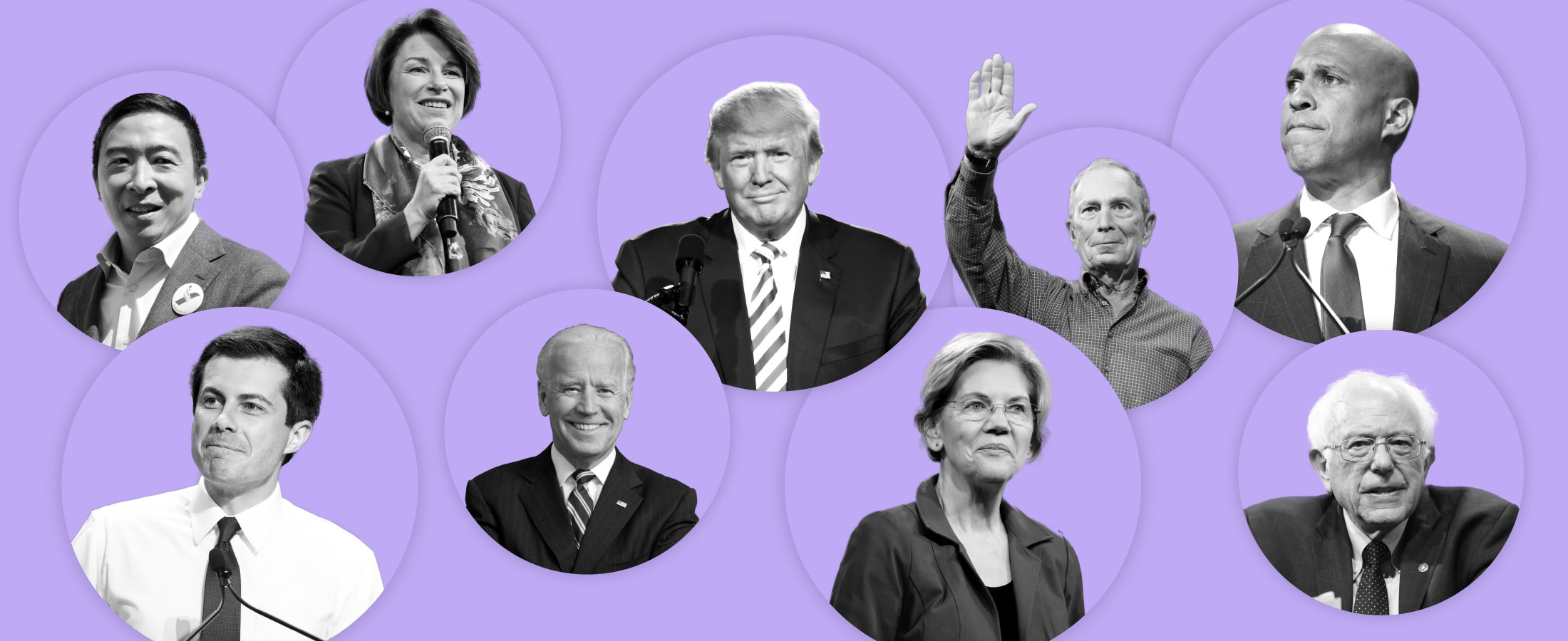
Update: Following Super Tuesday on March 3, 2020, when 14 states held primary elections for the Democratic presidential nominee, the slate of presidential candidates narrowed to Joe Biden and Bernie Sanders. Pete Buttigieg and Amy Klobuchar dropped out of the race and announced their support for Joe Biden on March 2. Michael Bloomberg and Elizabeth Warren dropped out after Super Tuesday, with Bloomberg endorsing Biden. Warren has yet to endorse a candidate.
Update: On February 11, 2020 California tech entrepreneur Andrew Yang ended his presidential bid , after failing to win any Iowa delegates.
Update: On January 13, 2020 Senator Cory Booker (D-N.J.) announced he will drop out of the race due to low polling numbers and inadequate funding, according to the New York Times.
The 2020 presidential election is just around the corner.
And whether you pay attention to politics or not, each candidate has an individual plan for economic policy as part of his or her campaign. Those policies can have an impact on your financial life, from how much you pay in taxes and for health care, to the cost of gas and groceries, even how much you’ll pay for a college education.
So as part of our 2020 coverage on Stash Learn, we’re providing you with information about each candidate.
While the field is still pretty crowded, we’ve pared the list of presidential hopefuls down to current President Donald Trump, the Republican candidate, and eight of the Democratic candidates who hope to become the official nominees for their party. These eight candidates are polling at or above 1.8%, according to Real Clear Politics, which creates an average from dozens of national polls.
Here are financial highlights for each of these nine candidates.
Republican candidate
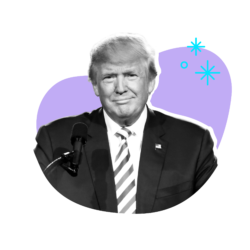
Donald Trump
Current president of the U.S.
- Supports reducing taxes for individual taxpayers and businesses, and rolling back regulations for U.S. companies.
- In 2017, Trump presided over the biggest tax cut in a generation, which reduced the top ordinary income rate to 37% from 39%, doubled the standard deduction for ordinary taxpayers, and slashed corporate tax rates.
- The cost of the tax cut is expected to add $3 trillion to the federal deficit over the next decade.
- His “America First” trade agenda aims to return manufacturing to the U.S, in part by exiting international trade agreements such as the Trans-Pacific Partnership and reworking older deals such as NAFTA.
- Trump entered into a trade war with China and other countries starting in 2018. The trade war with China particularly, where both countries have added tariffs on billions of dollars worth of goods, might be a drag on business and the economy in 2020 and beyond, according to experts.
Democratic candidates
Ranked from highest to lowest according to polling data.
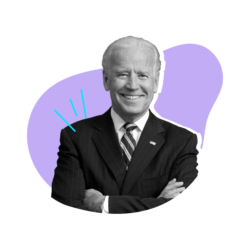
Joe Biden
Former vice president of the U.S.
- Hopes to invest $1.3 trillion over ten years in national infrastructure, including the construction of a high-speed rail network and the repair of highways, roads, bridges, and airports, according to his campaign website.
- Plans to roll back President Trump’s 2017 tax cuts, crack down on tax evasion, and increase corporate taxes.
- Potentially funnel billions of dollars to economically distressed cities for development, according to his
- Would encourage the purchase and use of electric vehicles by building 500,000 public charging stations for electric cars.
- Supports the Green New Deal, a ten-year plan to infuse environmental policy into trade policy, foreign policy, and economic policy by reducing carbon emissions and bolstering sustainable energy. The deal could reverse the effects of climate change, and could potentially create millions of jobs, proponents say.
- Would expand the Affordable Care Act of the Obama administration.
- Supports a minimum wage of $15 per hour.
- Biden’s plans could cost $3.4 trillion over a decade, according to Bloomberg.

Bernie Sanders
Senator (Vermont)
- Sanders would increase taxes on people who make $32 million or more annually, the top 0.1% of Americans. With this tax, Sanders hopes to raise $4.35 trillion over ten years and would reportedly decrease the wealth of billionaires by 50% over 15 years, according to his campaign website.
- Backs the Green New Deal and would invest $200 billion in the Green Climate Fund, to help developing countries combat climate change.
- Supports Medicare for all, which would expand Medicare nationally to every American, free at the point of service. This plan could cost $34 trillion, according to The Atlantic.
- Would reduce the size of America’s biggest banks and reinstate the Glass-Steagall Act, which would separate commercial banking and investment banking.
- Hopes to cancel $1.6 trillion worth of student loan debt and to cap interest rates for student loans at 1.88%. Sanders would also make public college and trade-school free for everyone.
- Raise the federal minimum wage to $15
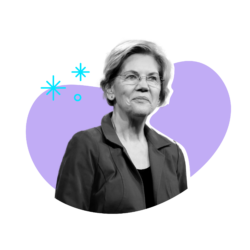
Elizabeth Warren
Senator (Massachusetts)
- Warren plans to impose an “Ultra-Millionaire Tax” on the wealthiest 75,000 households. This plan would place a 2% tax on net worth greater than $50 million and a 6% tax on net worth greater than $1 billion, according to her campaign website.
- The introduction of a “real corporate profits tax,” a tax of 7% on corporate profit greater than $100 million. (Corporations had their taxes cut nearly in half under the Republican tax plan of 2017.)
- Would cancel some student loan debt.
- Supports Medicare for all, a plan that could cost trillions to enact.
- Backs universal child care.
- Has supported the Green New Deal to potentially address climate change and create jobs and has also introduced a Blue New Deal to restore ocean habitat.
- Would hold private equity firms accountable for companies that they buy.
- Like Bernie Sanders, Warren plans to re-enact the Glass-Stegall Act, with increased scrutiny on big banks.
- Aims to break up big tech companies such as Facebook and Amazon by appointing regulators to challenge mergers that reduce competition, according to her campaign website.
- Elizabeth Warren’s plans could cost $29.8 trillion over a decade, according to CQ Roll Call.
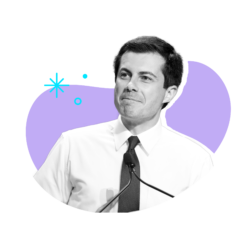
Pete Buttigieg
Mayor (South Bend, Indiana)
- Plans to make paid sick leave and paid family leave a federal policy, according to his campaign website.
- Supports the Green New Deal and would push to see an end to subsidies for fossil fuel companies and preventing new fossil leases on public lands. Buttigieg also announced that he would spend $500 million of federal money to create jobs and stimulate small businesses in rural communities.
- Would invest $50 billion over the course of ten years in research and development in agriculture.
- Backs a $15 federal minimum wage
- Voiced support for Medicare for All Who Want It, a plan that would create a public healthcare option, a plan that is less far-reaching than Sanders’ and Warren’s plans.
- Hopes to reverse President Trump’s tax cuts for the wealthiest earners, and levy a tax on the sale of capital assets, also known as a capital gains tax, on the top 1%, according to IndyStar.
- His economic proposals have a $5.7 trillion price tag, according to the IndyStar.
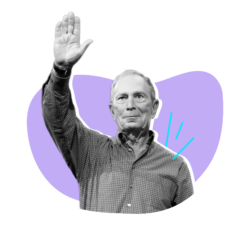
Michael Bloomberg
Former mayor (New York)
- Although he has outlined only a few potential policies so far, he has discussed plans to include an expansion on gun control that could cost the government $300 million.
- Historically, Bloomberg has prioritized the environment, having founded Beyond Carbon, which works towards energy reform.
- Bloomberg has suggested that he would expand Obama’s signature healthcare legislation, the Affordable Care Act.
- Proposes a federal minimum wage of $15, according to his campaign website.
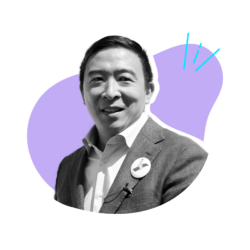
Andrew Yang
Businessman (California)
- Hopes to create a universal basic income which he calls the Freedom Dividend, a government stipend of $1,000 per month for every U.S. citizen over the age of 18, a plan which would cost $2.8 trillion per year, according to The Tax Foundation.
- Would allow welfare recipients to choose between the Freedom Dividend and traditional welfare benefits.
- Plans to impose a Value Added Tax, or a 10% tax on production, on corporations which he has suggested would generate $800 billion to pay for the Freedom Dividend.
- Would increase taxes on top earners, according to his campaign website.
- Promotes the idea of “human-centered capitalism”, a philosophy that places human interests and welfare above the profit motive of capitalism.
- Supports Medicare for all and the Green New Deal.
- Plans to leave minimum wage levels to the states.
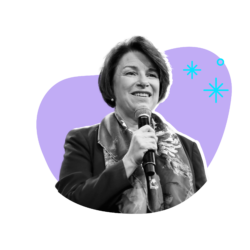
Amy Klobuchar
Senator (Minnesota)
- Klobuchar would raise taxes on the two highest income brackets and would require people making more than $1 million to pay a minimum tax rate of 20%, according to Politico.
- Hopes to reduce childhood poverty by 50% in ten years and eliminate childhood poverty in a generation.
- Would expand crop insurance programs for farmers, which provide protection for crops through the Department of Agriculture, and would build a commission to solve the financial problems facing dairy farmers as part of her “Plan for the Heartland.”
- Spend $1 trillion to revitalize American infrastructure, including rural communities.
- Supports the Green New Deal and an expansion of the Affordable Care Act over Medicare for all, according to her campaign website.
- Plans to expand student loan forgiveness and would make one and two-year community college degrees free.
- Supports a $15 per hour federal minimum wage increase.
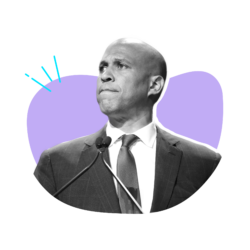
Cory Booker
Senator (New Jersey)
- Supports legislation for “Baby Bonds,” a program to address the income inequality gap in the U.S.. It would give every child $1,000 at birth in an interest-earning account, according to his campaign website.
- Would raise estate and capital gains taxes, according to Politico.
- Supports the Green New Deal and Medicare for all.
- Plans to invest $100 Billion in historically black colleges and universities and minority-serving institutions.
- Would work towards free college for everyone, and would increase vocational programs, while reforming the student loan application process.
- Platform includes raising the federal minimum wage to $15 per hour.
Whoever you decide to support in the 2020 election, it’s important to stay informed about the issues and the candidates, which you can do by reviewing their campaign websites. And it’s important to vote!











